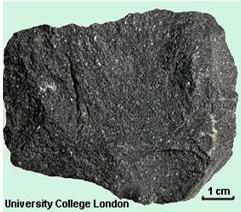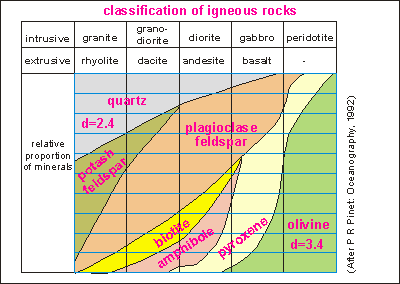These extrusive rocks are formed from magma at or above the surface of the planet and generally display smaller mineral crystals or.
Why does basalt have smaller crystals than granite.
The difference is the texture.
Granite is an intrusive rock that is formed when magma cools inside the crust.
Basalt forms when magma cools and solidifies on the surface of the earth.
Under the ground so they cools slow and that s why they have large crystals.
Basalt is basic and contains a substantial amount of olivine whereas granite is acidic and is rich in quartz basalt is an extrusive igneous rock with small mineral crystals formed when magma.
If magma cools quickly for example when basalt lava erupts from a volcano then many crystals form very quickly and the resulting rock is fine grained with crystals usually less than 1mm in size.
You may use your identification charts rhyolite cooled quicker than granite.
Gabbro cooled slowly and is entirely composed of large larger crystals without any glassy or very fine grained rock material.
Basalt scoria andesitic diorite andesite granitic granite rhyolite pumice obsidian.
Basalt on the other hand has a smooth texture from rapid cooling usually by water.
Among other differences the nature of these rocks reveals that basalt is basic in nature whereas granite is acidic in nature.
How can you distinguish basalt from a sill or buried lava flow.
Cools more slowly and crystals are bigger which means they are coarse grained.
Why does rhyolite have smaller crystals than granite.
Fossils are only found in.
This slow cooling gives time for crystals to grow making it more coarsely grained than an extrusive rock.
Basalt cooled quickly and is therefore fine grained to even glassy with or without phenocrysts individual large crystals.
Yes because granite is a slow cooling rock therefore the crystals have a lot of time to form while basalt is a fast cooling rock therefore thecrystals don t have much time to form and develop.
They cools so fast and that s why they have small crystals than granite.




























